In the pursuit of a healthier lifestyle, individuals often seek effective and efficient ways to manage weight and improve overall fitness. Treadmill workouts emerge as a cornerstone in achieving these goals, offering a dynamic and accessible avenue for calorie burn. This introduction delves into the significance of treadmill exercises and the myriad benefits they bring to a comprehensive fitness routine.
The Importance of Treadmill Workouts for Calorie Burn
Treadmill workouts stand out as a pivotal component in the quest for calorie burn, providing a controlled yet challenging environment to elevate heart rates and engage major muscle groups. The ability to customize speed, incline, and intensity allows individuals to tailor their workouts to personal fitness levels, making it an adaptable tool for those at various stages of their fitness journey. Beyond the immediate calorie burn during the exercise, the residual effects of an elevated metabolism contribute to continued energy expenditure post-workout, enhancing the overall effectiveness of treadmill training.
Benefits of Incorporating Treadmill Exercises into a Fitness Routine
The advantages of integrating treadmill exercises into a regular fitness regimen are multifaceted.
Firstly, treadmills offer a low-impact alternative to outdoor running, reducing the risk of joint strain while maintaining cardiovascular benefits. The controlled environment facilitates consistent and measurable progress, enabling individuals to set and achieve specific fitness goals.
Additionally, the versatility of treadmill workouts accommodates a wide range of fitness levels and preferences, making it an inclusive option for individuals with diverse needs and fitness objectives. As a tool for calorie burn, the treadmill stands as a reliable ally, promoting weight management and overall well-being.
In the subsequent discussion, we will explore specific treadmill workout strategies designed to optimize calorie burn and maximize the benefits of this versatile fitness equipment.

Warm-Up: Preparing Your Body for Treadmill Success
Importance of Warming Up Before a Treadmill Workout:
The warm-up phase is a critical precursor to any exercise routine, catalyzing optimal performance and injury prevention. By gradually increasing the heart rate, warming up enhances blood flow to the muscles, priming them for the increased demands of the impending workout.
Warm-up not only improves the efficiency of energy production but also enhances joint flexibility and range of motion. In the context of a treadmill workout, an effective warm-up ready both the cardiovascular and musculoskeletal systems, ensuring a smoother transition into more intense exercise phases.
Dynamic Stretching Exercises to Prepare the Muscles for the Workout:
Dynamic stretching is a dynamic duo for a treadmill warm-up, combining movement and flexibility to wake up the body in preparation for action. Unlike static stretching, which involves holding a stretch for an extended period, dynamic stretches involve controlled, active movements that engage various muscle groups. Here are some dynamic stretching exercises tailored for an effective treadmill warm-up:
- Leg Swings:
- Stand next to the treadmill and hold onto the handrail for balance.
- Swing one leg forward and backward, then side to side in a controlled manner.
- Repeat for 10-15 swings on each leg.
- Arm Circles:
- Extend your arms to the sides and make small circles in a clockwise and counterclockwise motion.
- Gradually increase the size of the circles as your muscles warm up.
- Complete 1-2 minutes of continuous arm circles.

- High Knees:
- March in place, lifting your knees as high as comfortable.
- Engage your core and swing your arms in sync with your knee movements.
- Continue for 1-2 minutes to elevate your heart rate.
- Ankle Rolls:
- Lift one foot off the ground and rotate your ankle clockwise and then counterclockwise.
- Perform 10-15 rotations in each direction before switching to the other ankle.
- Torso Twists:
- Stand with your feet shoulder-width apart and twist your upper body from side to side.
- Keep your movements controlled, engaging your core muscles.
- Perform 10-15 twists on each side.
Interval Training on a Treadmill: Igniting Calorie Burn with Variation
What is Interval Training on a Treadmill?
Interval training involves alternating between periods of high-intensity exercise and periods of lower-intensity activity or rest. On a treadmill, this translates to alternating between challenging, fast-paced sprints and more moderate or slow-paced recovery periods. The beauty of interval training lies in its ability to push the body beyond a steady-state workout, engaging different energy systems and maximizing calorie burn. It's an effective way to enhance cardiovascular fitness, increase metabolism, and break through fitness plateaus.
Benefits of Interval Training for Calorie Burn:
- EPOC (Excess Post-Exercise Oxygen Consumption):
Interval training induces EPOC, commonly known as the afterburn effect. After a high-intensity interval workout, the body continues to burn calories at an elevated rate during the recovery period as it works to restore oxygen levels and repair tissues.
- Efficient Time Utilization:
Interval training is a time-efficient approach to burning calories. The intensity of the workout allows individuals to achieve significant calorie expenditure in a shorter amount of time compared to traditional steady-state cardio exercises.
- Improved Cardiovascular Fitness:
The fluctuation between high and low-intensity periods challenges the cardiovascular system, leading to improved heart health and increased aerobic capacity.
- Fat Loss:
Interval training is effective in reducing body fat, especially abdominal fat. The combination of high-intensity efforts and the metabolic impact contributes to efficient fat loss.
Sample Interval Workout Routine:
- Warm-Up Phase:
- Begin with a 5-10 minute warm-up at a moderate pace (e.g., brisk walking or light jogging).
- Gradually increase the incline and speed during the warm-up to prepare the body for more intense efforts.
- High-Intensity Intervals:
- Sprint at maximum effort for 30 seconds to 1 minute.
- Adjust the speed and incline to challenge yourself, but ensure it is sustainable for the designated interval.
- The goal is to reach an intensity that makes it difficult to maintain a conversation.
- Recovery Periods:
- Reduce the speed and incline to a comfortable level.
- Recover for 1-2 minutes with a slower-paced walk or light jog.
- Allow your heart rate to decrease, but not to completely rest.
- Repeat Cycles:
- Continue the cycle of high-intensity intervals followed by recovery periods for 20-30 minutes, depending on fitness level and goals.
- Aim for 4-8 cycles, gradually increasing intensity or duration as fitness improves.
Incline Training: Elevating Calorie Burn and Fitness Gains
How Does Incline Affect Calorie Burn?
The incline on a treadmill significantly influences calorie burn by intensifying the effort required during the workout. Walking or running on an incline engages additional muscle groups, particularly the muscles in the lower body, such as the quadriceps, hamstrings, and calves. This increased muscular effort leads to a higher energy expenditure, resulting in more calories burned compared to exercising on a flat surface. Incline training also simulates uphill terrain, providing a cardiovascular challenge that elevates the heart rate and boosts the overall metabolic rate, contributing to enhanced calorie burn during and after the workout.
Benefits of Incorporating Incline Variations:
- Muscle Engagement:
Incline training targets specific muscle groups, promoting strength and endurance in the lower body. This can contribute to improved tone and definition in the legs.
- Caloric Expenditure:
The additional effort required to ascend inclines amplifies calorie burn, making incline training an efficient way to achieve weight management and fat loss goals.
- Cardiovascular Challenge:
Incline variations intensify the cardiovascular workout, enhancing heart health and aerobic fitness. This added challenge can lead to improved stamina and endurance over time.
- Variety in Workout Routine:
Incorporating incline variations adds diversity to a treadmill workout routine, preventing monotony and keeping the exercise regimen interesting and engaging.
Sample Incline Workout Routine:
- Warm-Up with a Slight Incline:
- Begin with a 5-10 minute warm-up at a comfortable pace with a slight incline (1-3%).
- The incline should be enough to engage muscles but not too steep to cause fatigue prematurely.
- Gradual Increase in Incline During the Workout:
- After the warm-up, gradually increase the incline every 5 minutes.
- Aim for a challenging but sustainable incline level, progressively building up the intensity.
- Continue this progression for 20-30 minutes, adjusting speed and incline as needed.
- Intervals of Flat Running for Recovery:
- Periodically, incorporate intervals of flat running or walking to provide active recovery.
- These intervals should allow heart rate and breathing to stabilize before resuming the incline challenge.
- Experiment with alternating between incline intervals and flat running to keep the workout dynamic.
Endurance Training on a Treadmill: Building Stamina and Caloric Burn
What is Endurance Training on a Treadmill?
Endurance training on a treadmill involves sustaining a consistent pace for an extended duration, challenging the cardiovascular system, and gradually building stamina. Unlike high-intensity interval training, endurance workouts emphasize a steady, moderate effort over a prolonged period. This type of training is designed to enhance the body's ability to endure prolonged exercise, improving cardiovascular fitness, and promoting efficient calorie burn over time.
Importance of Sustained Effort for Calorie Burn:
- Extended Caloric Expenditure:
Endurance training induces a sustained increase in heart rate and oxygen consumption, leading to an extended period of calorie burn. This is especially beneficial for those aiming for weight management and fat loss.
- Improved Aerobic Capacity:
Consistent, prolonged efforts challenge and enhance the body's aerobic capacity, contributing to improved cardiovascular health. This can result in increased efficiency of oxygen utilization and overall endurance.
- Training for Long-Term Goals:
Endurance training is essential for individuals preparing for events such as long-distance running, cycling, or other activities that demand prolonged effort. It conditions the body to handle sustained physical stress.
Sample Endurance Workout Routine:
- Gradual Warm-Up:
- Begin with a 10-15 minute warm-up at a comfortable pace, gradually increasing the speed and incline.
- The warm-up prepares the cardiovascular system and muscles for the sustained effort ahead.
- Consistent Pace for an Extended Period:
- Set a moderate and sustainable pace that allows you to maintain a conversation.
- Aim to sustain this pace for 30 minutes to an hour, depending on your fitness level and goals.
- Consider adjusting the incline to simulate outdoor conditions and engage different muscle groups.
- Cool Down Phase:
- Gradually reduce the speed and incline during the last 5-10 minutes of your workout.
- The cool-down helps bring your heart rate back to a resting state and prevents dizziness or discomfort.
- Incorporate static stretching for major muscle groups to improve flexibility and aid in recovery.
Cross Training on the Treadmill: Fusing Cardiovascular and Strength Elements
Cross-Training on the Treadmill:
Cross-training on the treadmill involves incorporating a variety of exercises and activities beyond traditional running or walking. This approach aims to diversify your workout routine, engaging different muscle groups, and challenging various aspects of fitness simultaneously. By combining cardiovascular exercises with strength training elements, cross-training on the treadmill provides a holistic approach to fitness, enhancing overall health and well-being.
Incorporating Strength Exercises into the Treadmill Routine(If you have an incline treadmill):
- Walking Lunges:
- Step forward with one foot, lowering your body until both knees are bent at a 90-degree angle.
- Push off the front foot and bring it back to the starting position.
- Repeat with the opposite leg, alternating lunges as you walk.
- Side Shuffles:
- Stand with feet shoulder-width apart, knees slightly bent.
- Shuffle to one side for a few steps, then shuffle back in the opposite direction.
- Maintain a low stance to engage the leg muscles.
- Mountain Climbers:
- Get into a plank position with your hands on the treadmill belt.
- Alternately drive your knees toward your chest, engaging your core and leg muscles.
- Treadmill Push-Ups:
- Place your hands on the treadmill console or frame.
- Perform push-ups with a controlled motion, engaging your chest and arms.
- Plank Walks:
- Start in a plank position with your hands on the treadmill belt.
- Walk your hands forward and backward, engaging your core and upper body.
- Incline Power Walks:
- Set the treadmill to a steep incline.
- Hold onto the handrails and power walk uphill, engaging your glutes, hamstrings, and calves.
Benefits of a Diversified Workout for Overall Fitness and Calorie Burn:
- Muscle Engagement:
Cross-training engages a broader range of muscles, promoting overall strength and balance. Combining cardiovascular exercises with strength elements ensures a more comprehensive workout.
- Prevention of Plateaus:
Mixing up your routine challenges the body in different ways, preventing it from adapting and plateauing. This constant variation promotes continuous improvement and results.
- Enhanced Caloric Burn:
Diversified workouts often lead to increased calorie burn. The body expends more energy adapting to different activities, contributing to weight management and fat loss goals.
- Reduced Risk of Injury:
Focusing on a variety of movements and exercises helps distribute stress across different muscle groups, reducing the risk of overuse injuries associated with repetitive motions.
- Mental Stimulation:
Cross-training keeps workouts interesting and mentally stimulating. This variety can enhance motivation and adherence to a fitness routine.
Cool Down: A Crucial Finale to Your Treadmill Journey
Importance of Cooling Down After a Treadmill Workout:
The cool-down is not merely a concluding formality but a vital component of a well-rounded treadmill workout. As your heart rate and breathing gradually return to baseline levels, a proper cool-down serves several essential purposes:
- Heart Rate Regulation:
The transition from intense exercise to rest should be gradual to prevent abrupt changes in heart rate. A cool-down helps your cardiovascular system ease back to a state of rest, reducing the risk of dizziness or faintness.
- Prevention of Blood Pooling:
During exercise, blood flow is directed to working muscles. A cool-down aids in the redistribution of blood, preventing it from pooling in the extremities and aiding the return of blood to the heart.
- Muscle Recovery:
Intense exercise leads to the accumulation of metabolic by-products, such as lactic acid, in the muscles. A cool-down promotes the removal of these by-products, reducing muscle soreness and stiffness.
- Flexibility Enhancement:
Cooling down includes stretching exercises, which can enhance flexibility. This is particularly beneficial after a workout when muscles are warm and more pliable, promoting an improved range of motion.
- Psychological Transition:
The cooldown provides a mental shift, allowing you to reflect on your workout and transition from a state of heightened activity to a more relaxed and mindful state.
Static Stretching Exercises to Promote Flexibility and Recovery:
- Calf Stretch:
- Stand facing a wall with one foot forward and the other back, both feet flat on the ground.
- Keep the back leg straight, and bend the front knee while leaning into the wall.
- Hold for 15-30 seconds, feeling the stretch in the calf of the back leg.
- Quadriceps Stretch:
- While standing, bring one heel towards your buttocks, holding it with your hand.
- Keep your knees close together and push your hips forward.
- Hold for 15-30 seconds, feeling the stretch in the front of the thigh.
- Hamstring Stretch:
- Sit on the floor with one leg extended straight and the other bent so the sole of your foot rests against the inner thigh of the extended leg.
- Lean forward, reaching towards the toes of the extended leg.
- Hold for 15-30 seconds, feeling the stretch in the back of the thigh.
- Hip Flexor Stretch:
- Kneel on one knee with the other foot in front, forming a 90-degree angle.
- Shift your weight forward, feeling the stretch in the hip flexor of the back leg.
- Hold for 15-30 seconds and switch legs.
- Trunk Rotation Stretch:
- Sit or stand with your back straight and your feet shoulder-width apart.
- Rotate your torso to one side, holding the stretch for 15-30 seconds.
- Repeat on the other side.

Monitoring Progress: Navigating Your Fitness Journey with Precision
Using Technology to Track Calorie Burn and Performance:
In the digital age, harnessing technology can provide valuable insights into your treadmill workouts and overall fitness progress. Utilizing fitness trackers, apps, and treadmill consoles equipped with advanced metrics can offer the following benefits:
- Calorie Tracking:
Many devices provide estimates of calorie burn based on your workout intensity, duration, and personal metrics. This information can help you align your exercise routine with specific calorie-related goals.
- Heart Rate Monitoring:
Monitoring your heart rate during exercise provides a real-time assessment of your cardiovascular effort. This data can guide you to stay within target heart rate zones for optimal calorie burn and fitness gains.
- Distance and Speed Metrics:
Tracking the distance covered and your running or walking speed allows for better goal setting and progression monitoring over time.
- Workout History and Trends:
Many fitness devices and treadmill consoles store workout history, enabling you to review past performances, identify trends, and track improvements in endurance, speed, or calorie expenditure.
- Integration with Apps:
Syncing your treadmill workout data with fitness apps allows for a comprehensive overview of your activity levels, sleep patterns, and nutritional intake. This integrated approach provides a holistic perspective on your health and fitness journey.
DeerRun can connect to the fitness app - PitPat. Runners not only can track their training data and physical conditions, but they also can have races online with others at any time.

Setting Realistic Goals and Adjusting Workout Routines Accordingly:
- Define Clear Objectives:
Establish specific, measurable, achievable, relevant, and time-bound (SMART) goals. Whether it's weight loss, improved endurance, or increased speed, clearly define your objectives to guide your efforts.
- Start Gradually:
Avoid the temptation to push too hard too quickly. Gradual progression not only reduces the risk of injury but also allows your body to adapt, making long-term success more achievable.
- Regularly Assess and Adjust:
Periodically evaluate your progress against your initial goals. If you find that certain aspects are not progressing as expected, be open to adjusting your workout routine. This could involve modifying the intensity, and duration, or incorporating new exercises to keep things challenging.
- Celebrate Milestones:
Acknowledge and celebrate your achievements, no matter how small. Recognizing progress can boost motivation and reinforce positive habits.
- Listen to Your Body:
Pay attention to signs of fatigue, soreness, or any discomfort. Incorporate rest days and recovery periods into your routine, and be mindful of your body's cues to avoid overtraining.
- Consult with Professionals:
Consider seeking guidance from fitness professionals, trainers, or healthcare providers to ensure that your goals align with your overall health and well-being. They can provide personalized advice and adjustments based on your unique circumstances.
Safety Considerations: Nurturing Well-Being Throughout Your Fitness Journey
Tips for Proper Form and Technique on the Treadmill:
- Posture Matters:
- Maintain an upright posture with your head aligned over your spine.
- Avoid leaning too far forward or backward, as this can strain your neck and back.
- Natural Arm Movement:
- Let your arms swing naturally, keeping them at a comfortable angle.
- Avoid excessive tension or gripping the handrails tightly, as it can affect your balance.
- Consistent Stride:
- Maintain a steady and consistent stride length.
- Avoid overstriding, which can lead to discomfort or strain on your joints.
- Foot Placement:
- Land on the middle of your foot, not on your toes or heels.
- Ensure your feet are parallel and pointing forward to prevent unnecessary stress on your ankles and knees.
- Start Gradually:
- Begin with a slow warm-up, allowing your body to adjust to the movement.
- Increase speed and intensity gradually to prevent sudden strain or injury.
- Use Safety Features:
- Familiarize yourself with the treadmill's emergency stop button and safety clip.
- Attach the safety clip to your clothing so that the treadmill stops if you lose balance.
Avoiding Overexertion:
- Listen to Your Body:
- Pay attention to signs of fatigue, dizziness, or discomfort.
- If you experience pain, it's crucial to stop and assess the situation.
- Progress Gradually:
- Avoid sudden increases in workout intensity or duration.
- Gradual progression allows your body to adapt and reduces the risk of overexertion.
- Stay Hydrated:
- Adequate hydration is essential for maintaining performance and preventing dehydration-related issues.
- Drink water before, during, and after your workout.
- Include Variety:
- Mix up your workout routine to prevent overuse injuries.
- Incorporate different forms of exercise and give specific muscle groups time to recover.
Incorporating Rest Days into the Fitness Routine:
- Rest and Recovery:
- Schedule at least one or two rest days per week to allow your body to recover.
- Rest days are crucial for preventing burnout and reducing the risk of overtraining.
- Active Recovery:
- Consider light activities like walking or yoga on rest days.
- Active recovery promotes blood circulation and helps alleviate muscle stiffness.
- Sleep Quality:
- Prioritize adequate sleep for overall recovery and well-being.
- Quality sleep supports the body's repair processes and enhances overall fitness gains.
- Body Awareness:
- Be attuned to how your body feels on rest days.
- If you experience persistent fatigue or soreness, it may be an indication that your body needs more recovery time.
- Reevaluate Routine:
- Periodically reassess your workout routine and make adjustments based on how your body responds.
- Consult with fitness professionals if needed to optimize your regimen.
Conclusion
In conclusion, the best treadmill workout to support calorie burn is not a one-size-fits-all prescription but a dynamic and evolving journey. It's a journey where the rhythmic beat of each step aligns with the pulse of personal progress.
So, lace up those shoes, embrace the hum of the treadmill beneath you, and let each stride propel you toward a healthier, more energized, and invigorated version of yourself. The path to optimal calorie burn unfolds with every intentional step, setting the stage for a fulfilling and enduring fitness expedition.




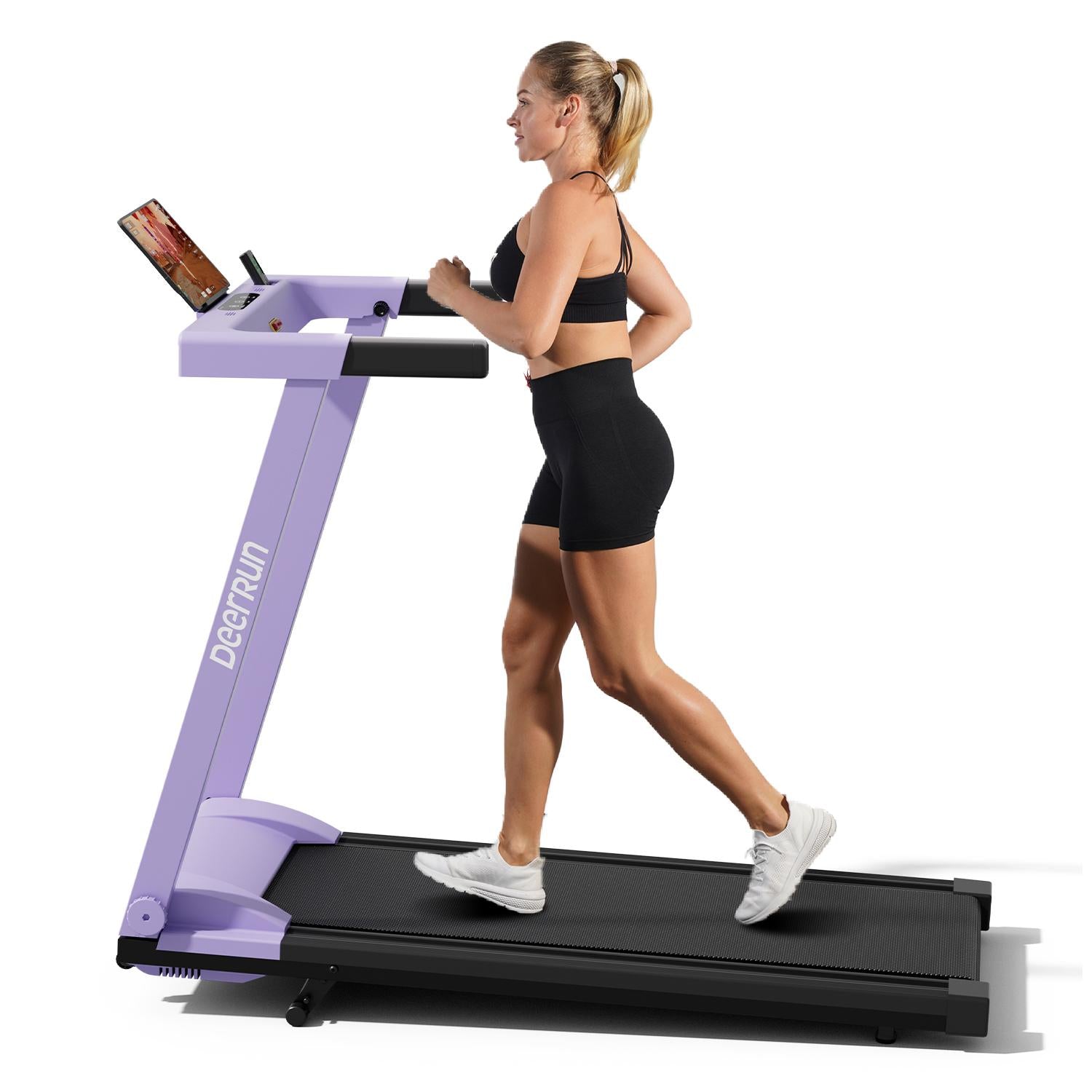


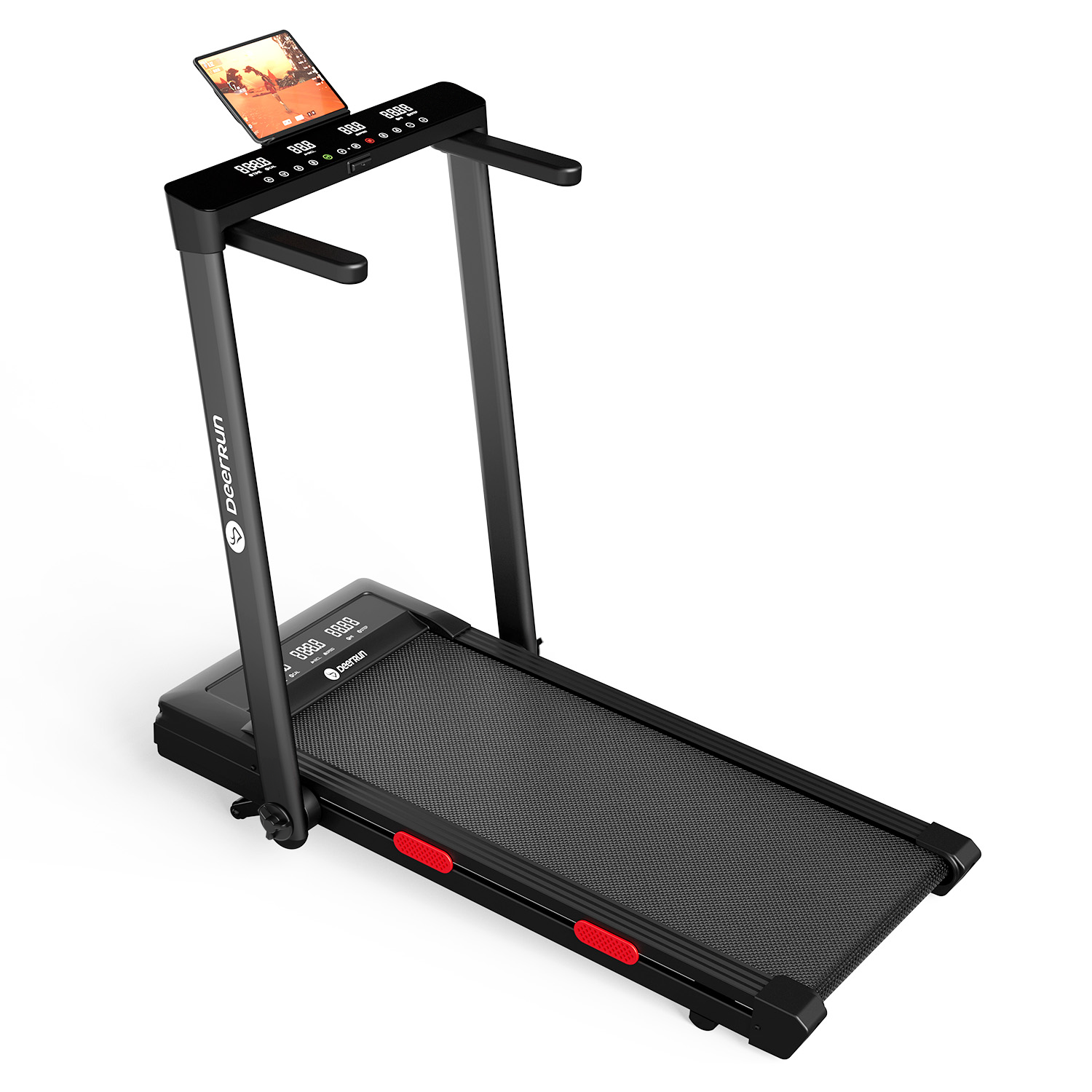













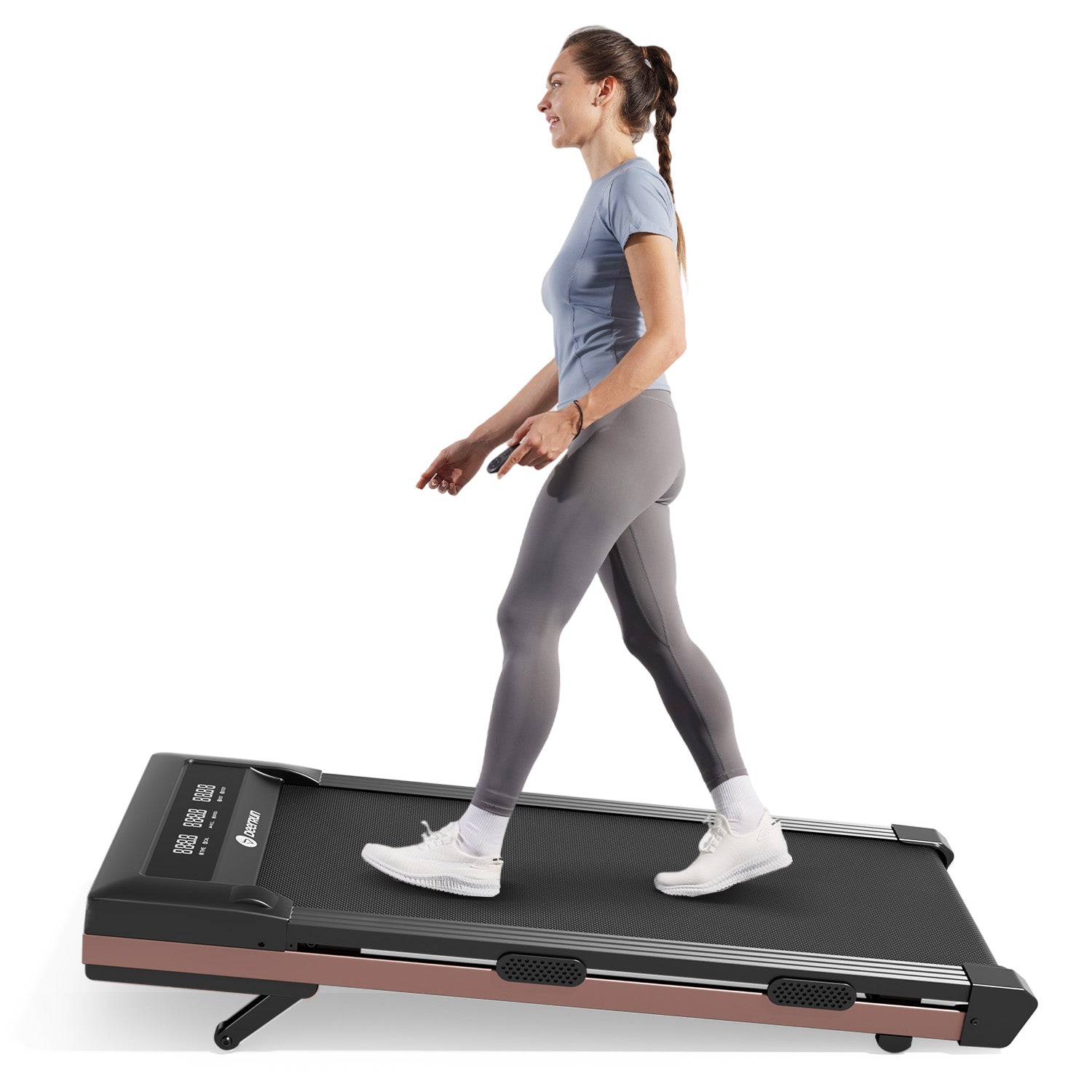
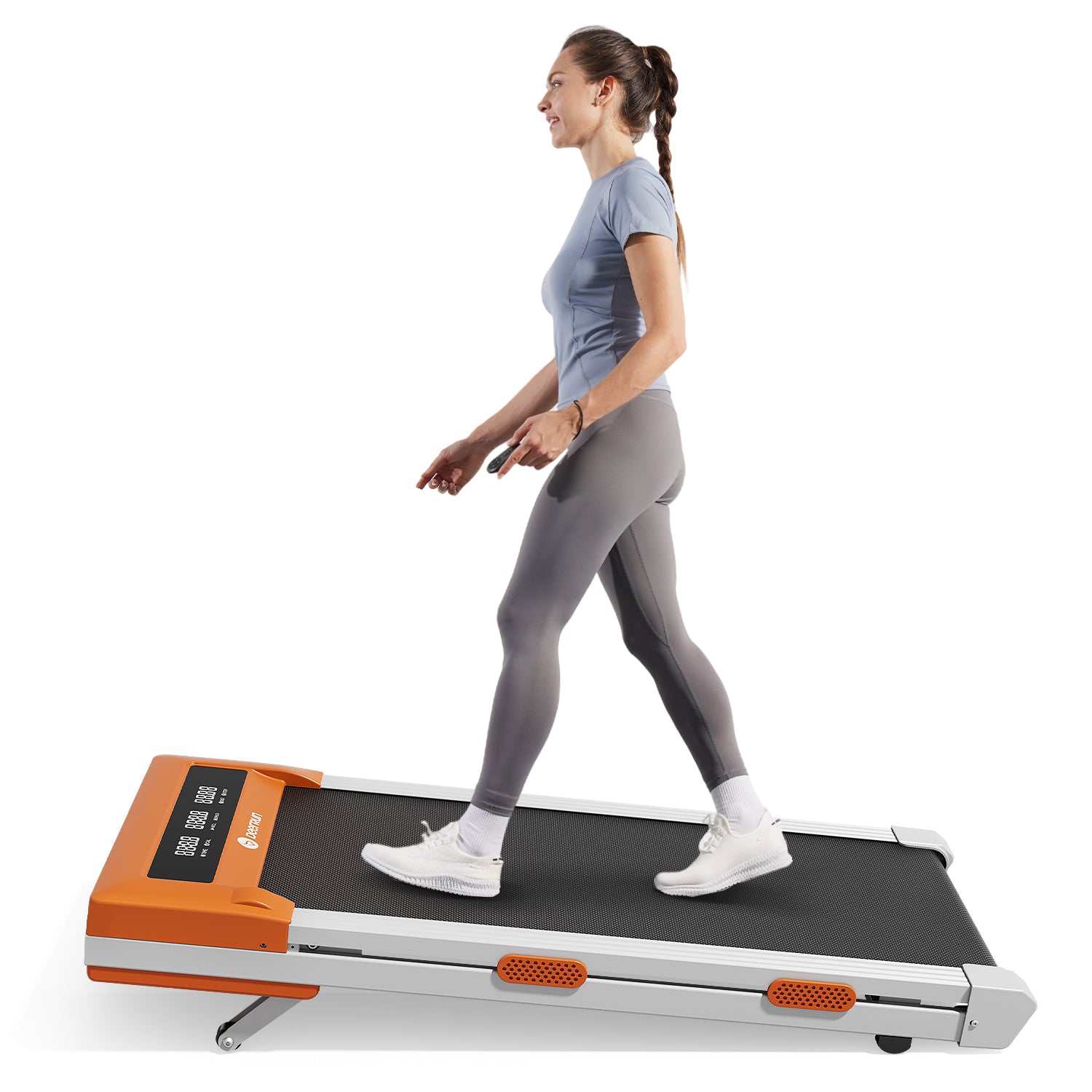

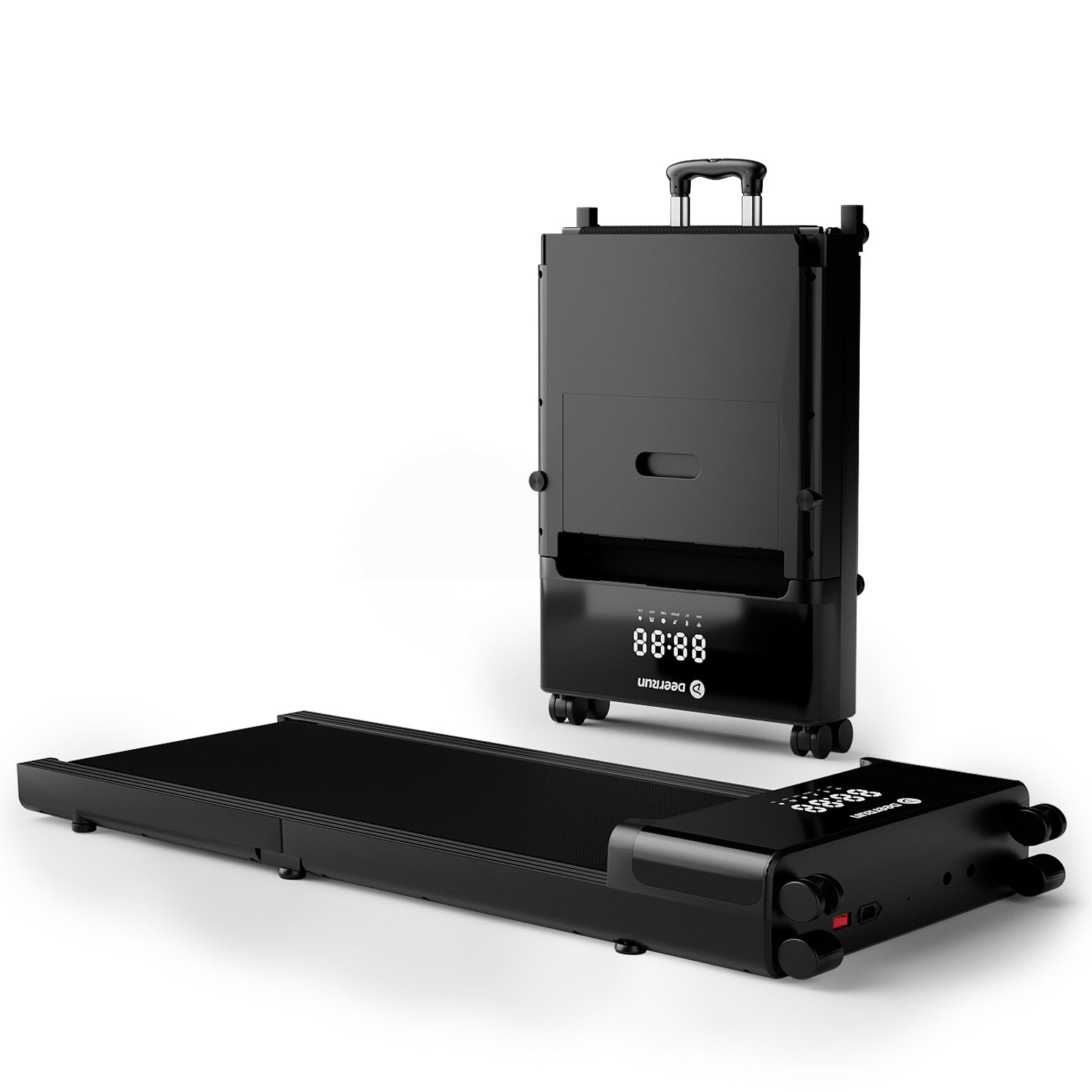

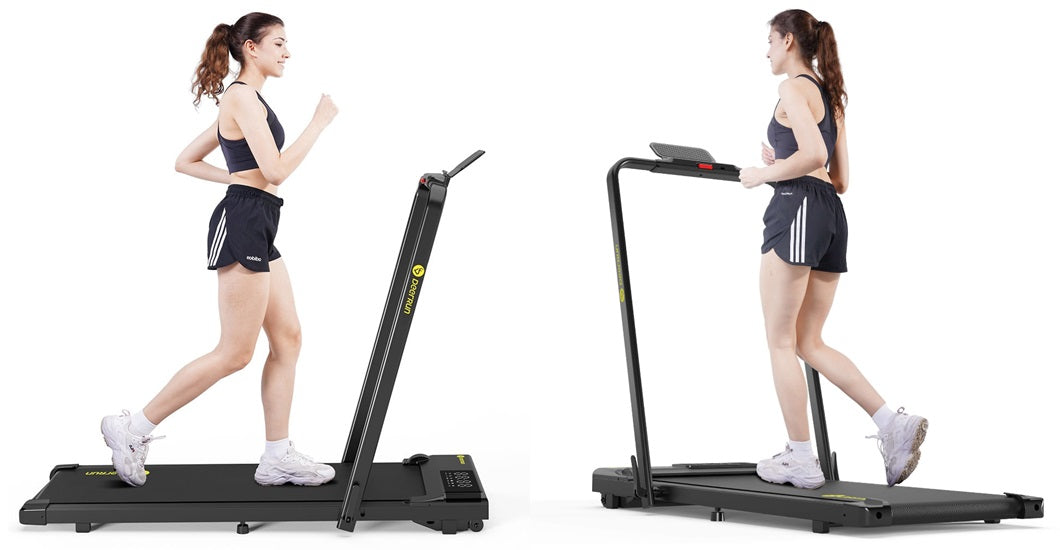
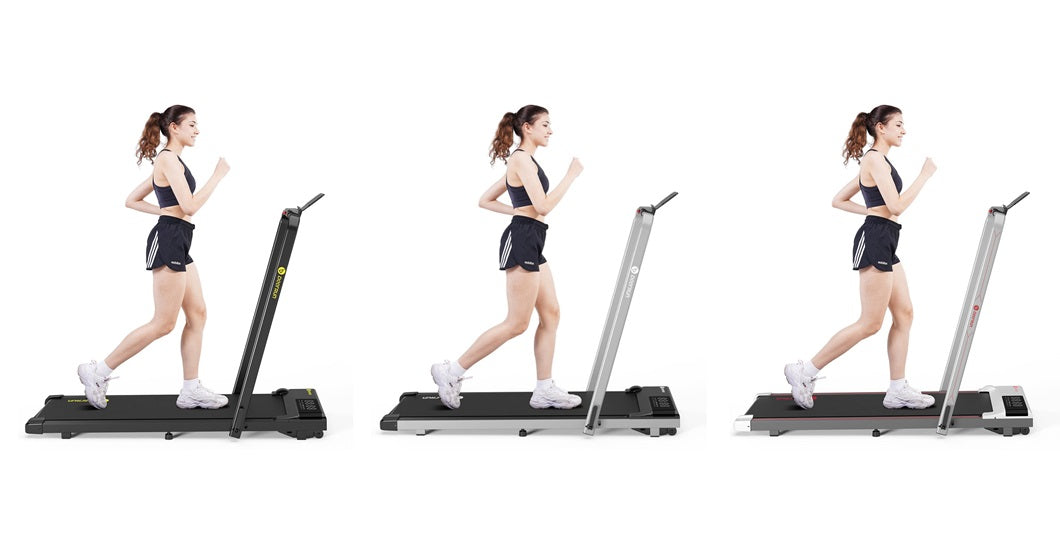

Leave a comment
All comments are moderated before being published.
This site is protected by hCaptcha and the hCaptcha Privacy Policy and Terms of Service apply.